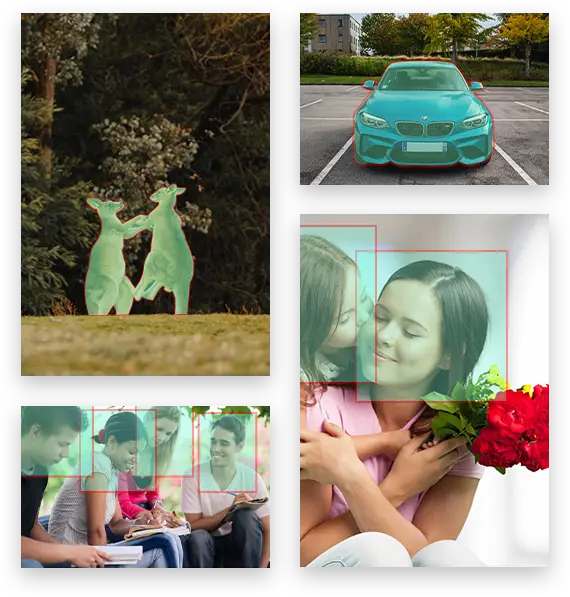Have you ever wondered what is the driving force behind driverless cars, biometric identification, visual search engines and so on? It is the new-gen concepts like Image Recognition and Computer Vision that help in fueling these tech marvels. This article takes you through some of the amazing applications of Computer Vision powered by image recognition—that might belong to a science fiction novel, but are a part of our reality.
Right from unlocking smartphones without manually entering pins, patterns, or passwords to driverless cars and everything in between, this new-gen tech goes far beyond our imagination. The ongoing advancements in Artificial Intelligence and Machine Learning contribute to the significant growth of Image Recognition and Computer Vision.
While some businesses use it for organizing large databases and developing visual websites, social network platforms like Meta (formerly known as Facebook) use it for facial recognition. Image classification for stock websites not only gets easier but also fuels the marketers’ creativity by helping them to craft interactive brand campaigns.
Apart from these common uses of image recognition that we have gotten accustomed to, this technology holds immense potential and is poised to fuel a visual revolution. Listed here are some of the amazing real-world applications of image annotation for machine learning:
- Gaming
Augmented reality experiments have long enticed people’s imagination. Augmented reality doesn’t replace the environment with a digital one, unlike virtual reality. Rather, it adds great perks to it. Transposition of digital information in the real world is no longer a futuristic dream, all thanks to image recognition services.
Out of all, the gaming industry makes the best use of augmented reality. Many new games use image identification to add extra glamor to their products to compliment them. This makes the overall gaming experience more ‘real’ and immediate. With the help of neural network training, developers can create more realistic game characters and environments.
- Social Media
Imagine, you wake up and open your eyes in the middle of the night, but you see the same blanket of darkness as when your eyes were closed. How does it feel? The same feeling constitutes the whole lives of some people. Apart from the apparent restrictions of being visually impaired or blind, such people are also cut off from social media, which is one of the most essential tools of our decade.
Some years ago, Meta transformed the way visually impaired people use and interact with their platform by leveraging image recognition technology. Though it sounds trivial, for a person who lives in near or complete darkness, checking up on their friends’ activities by scrolling through Facebook takes up hours instead of minutes.
Meta combined its image classification, and face recognition applications with automatic alternative text technologies to generate an accurate description of the photos. Apart from this, it also tells who exactly is in the photo, it doesn’t matter if they’re tagged or not.
- Healthcare
Radiology is the most known part that has benefitted from image recognition. Though several medical images are bad news for human radiologists, they prove to be a piece of great news for deep learning algorithms that lie at the core of several image identification technologies. It is because deep learning algorithms require data to learn from—the more they have, the more reliable are the outcomes.
There are so many cases today where image classification applications and deep learning algorithms are outperforming human radiologists, and becoming a crucial part of healthcare.
- Automobile
Image recognition technology deserves a lot of credit for making autonomous vehicles a huge success. It is because of the image annotation for the Machine Learning process that cars can navigate the world without a driver. Together with radar and lidar sensors, multiple video cameras detect different objects such as traffic lights, road signs, and other vehicles, while also looking out for pedestrians and other things.
The benefits of driverless cars or autonomous vehicles are many. They are strong and can improve emissions compliance, reduce the number of accidents, and ease congestion. It is because machines are faster at reacting to sudden distractions and much better at following rules as compared to humans.
- Retail
It is time to say thanks to image identification technology, trying on clothes before purchasing them is no longer compulsory. A device called a visual mirror enables you to try on the entire range of clothes that a brand has in its collections. This visual mirror can be installed either inside a shop or outside of it, to lure customers and persuade them to step inside the shop.
Actually, the mirror is a big screen with multiple cameras detecting different body parts of the individual standing in front of it. The mirror then picks up your correct size. So, you can turn around and see whether the clothing suits you or not. Apart from this, you can also search for different styles and colors according to your preference, thus making the shopping experience even more convenient.
Bottom Line
All in all, the next-gen image identification concept is doing wonders—its applications are limitless and are bound to human imagination only. So, businesses that invest in image recognition services can harness the true potential of their visual data, expand paradigms, and scale new heights in the industry.






